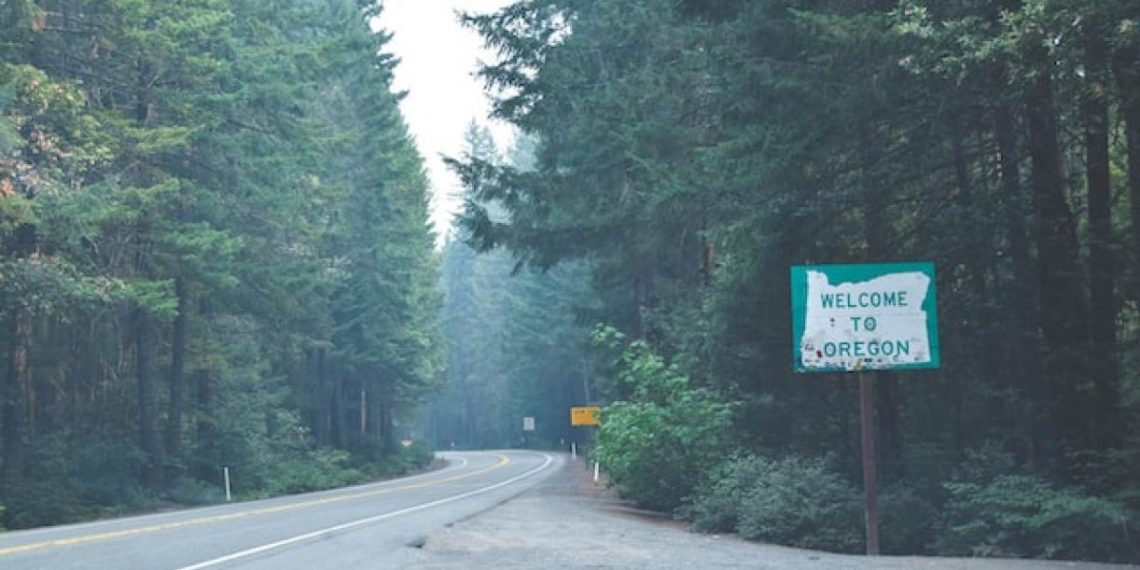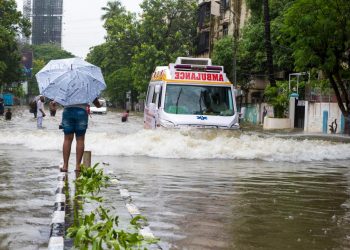Seventy percent of Oregon’s population lives in the Willamette Valley, where the North and South Santiam Rivers converge and flow into the Willamette River. In 2020, wildfires devastated communities along these rivers. Five lives were lost, over 1,500 structures were damaged or destroyed, and just under 400,000 acres were burned in three weeks as a result of the wildfires — equivalent to over half of the state of Rhode Island.
In July 2021, WRI’s Cities4Forests Initiative and Bonneville Environmental Foundation (BEF) supported a field tour led by the North Santiam Watershed Council (NSWC) in the North Santiam in Oregon, which was devastated by the Lionshead and Beachie Creek Fires in 2020. The tour aimed to assess the impact of the wildfires and identify innovative funding and financing strategies to support restoration and recovery for impacted areas and mitigate the likelihood of devastating wildfires in other high-risk locations.
The field tour revealed the challenges and successes of implementing effective wildfire resilience and recovery strategies in Oregon. The recovery challenges are immense. For example, there are many immediate costs associated with restoring fire-impacted landscapes, which can leave communities with limited budgets struggling to fund both short-term recovery and long-term restoration strategies — both of which are critical to revitalize local economies, impacted communities and ecosystems. In addition, the lack of a restoration workforce further constrains response measures following a wildfire: a dearth of qualified restoration workers limits the ability of communities to address large-scale, labor-intensive wildfire resilience and recovery strategies. Finally, the response infrastructure requires significant investments for communities and regions to be able to fortify wildfire resilience and recovery.
There are key lessons that can be learned from the North Santiam’s experience. The tour highlighted how a restoration economy — including environmental conservation, restoration and mitigation strategies — can support healthy, fire-resilient forests. The tour also highlighted three restoration strategies that, with support from the federal government and regional actors, can prevent catastrophic wildfires, minimize damage when they occur and create valuable community, economic and environmental benefits.
1) Create Long-Term, Flexible Funding and Financing Sources for Restoration
In the North Santiam, short-term expenses from the 2020 wildfires included critical safety measures, such as fixing burned road culverts and septic tanks, as well as removing hazardous trees and building debris. Immediate costs also included investments in reforestation, which includes funds to prevent and mitigate invasive weed species that can destroy native ecosystems, as well as funds for quality seedlings and experienced planters to properly reforest burned areas.
Post-fire expenses such as these can wreak havoc on local community and non-profit budgets and leave little money available for large-scale planning and recovery that could result in increased resilience and improved development.
Entities like federal agencies, water and energy utilities, cities and local watershed councils need to work together to catalyze long-term, flexible funding and financing opportunities to invest in pre- and post- wildfire restoration strategies. Prevention or fuel reduction activities is often more cost-effective than recovery investments. The recent 2022 Inflation Reduction Act, which dedicates over $2 billion for healthy, fire-resilient forests, is an example of a much-needed and catalytic investment that will support wildfire resilience and recovery across the United States.
Many communities across the western United States are developing innovative financing strategies that can help pool funding from disparate sources at scale. For example, the Forest Resilience Bond (FRB) — a public-private partnership and financial instrument co-developed by Blue Forest Conservation, WRI and the US Forest Service — was designed to use private capital to pay for the upfront costs of restoration in priority watersheds. In Summit County, Utah, WRI and local county partners are creating the Resilience Fund, which pools funding from utilities, county, state and federal funds to pay the upfront costs of wildfire risk reduction treatments and invest in a new state-run endowment to pay for future operations. These examples can serve as inspiration for more innovative financing mechanisms for restoration in Oregon and across the United States.
2) Increase and Support Restoration Workforce Capacity
Improved wildfire resilience and recovery in Oregon will also require increasing and supporting workforce capacity. This includes everyone who works to manage and restore land, such as on-the-ground restoration experts and those who work in administrative roles.
Rebecca McCoun, the former Executive Director of NSWC, said work opportunities for restoration in North Santiam are often seasonal, inconsistent, poorly compensated, labor-intensive and require technical expertise. According to Shannon Richardson, Executive Director of the South Santiam Watershed Council, a limited workforce hampers habitat restoration and fire prevention, as labor resources are directed toward higher-priority fire suppression and recovery efforts. This highlights the tension between pre- and post-fire priorities that can occur as a result of limited resources. Investing in year-round positions and training programs would help build a more robust workforce to support pre- and post-fire resilience and recovery efforts not only in Oregon, but across the United States.
The federal government recently advanced some strategies to enhance workforce capacity through the 2021 Infrastructure Investment and Jobs Act. The legislation dedicates about $3.3 billion to wildfire issues, including bolstering federal employment opportunities for those who fight wildfires. For example, the Wildland Firefighter occupational series will ensure better compensation for this workforce.
3) Invest in Restoration Infrastructure
Kathleen Guillozet, Senior Director of the Watershed Program at BEF, notes that communities are becoming increasingly interested in tree planting and reforestation initiatives to address wildfire challenges, but demand often outpaces supply.
A WRI report estimates the need for annual federal investments of $445 million to restore trees on federal lands, $4.3 billion to restore trees on non-federal lands and $1.5 billion to manage wildfire risks. These numbers do not reflect the investments necessary across all phases of tree planting, known as the reforestation pipeline, such as the costs to procure seeds or maintain trees after planting. Nurseries, seed storage facilities and tree processing facilities have declined in recent decades across the country. While Oregon currently has a seed orchard, their state nurseries are now closed. In a survey of eight states (including Oregon) with closed nurseries, the inability to cover nursery costs through sales and agency budget cuts were identified as the two largest reasons for nursery closures.
Furthermore, the scale and number of wildfires are contributing to a demand for tree seedlings that is far greater than what is currently in production. Procuring seedlings for reforestation can be a multi-year process due to high demand and supply chain challenges, which can significantly slow down restoration efforts. The resulting delays in replanting can allow invasive species to take root, threaten water quality and slow economic revitalization.
Addressing these supply chain issues is fundamental to implementing widespread restoration projects not only in Oregon, but across the country, including for wildfire resilience and recovery. Building a more robust supply chain to support pre- and post-fire resilience and recovery efforts can be achieved through investment in workforce development and research on nurseries that address the impacts of climate change on the supply of seeds. Finally, trees must be planted in a way that promotes long-term growth in the face of climate change to ensure they survive.
Protecting Communities Against Wildfires in the Santiams and Beyond
The challenges facing the North and South Santiam are indicative of the experience of many Western U.S. communities working to advance fire resilience and recovery efforts. As the number and severity of wildfires continue to grow, both in the region and globally, many communities are preparing for the worst.
To prevent future wildfires in Oregon, WRI and BEF are working with the U.S. Forest Service and the North and South Santiam Watershed Councils to fund and finance large-scale restoration in the basins, including by securing long-term funding commitments from beneficiaries of healthy forests and watersheds, increasing staffing and workforce capacity, and bolstering resilience for local and downstream communities. These strategies will not only advance recovery from past fires, but support resilience to protect people, communities and economies from the threats of future fires.




